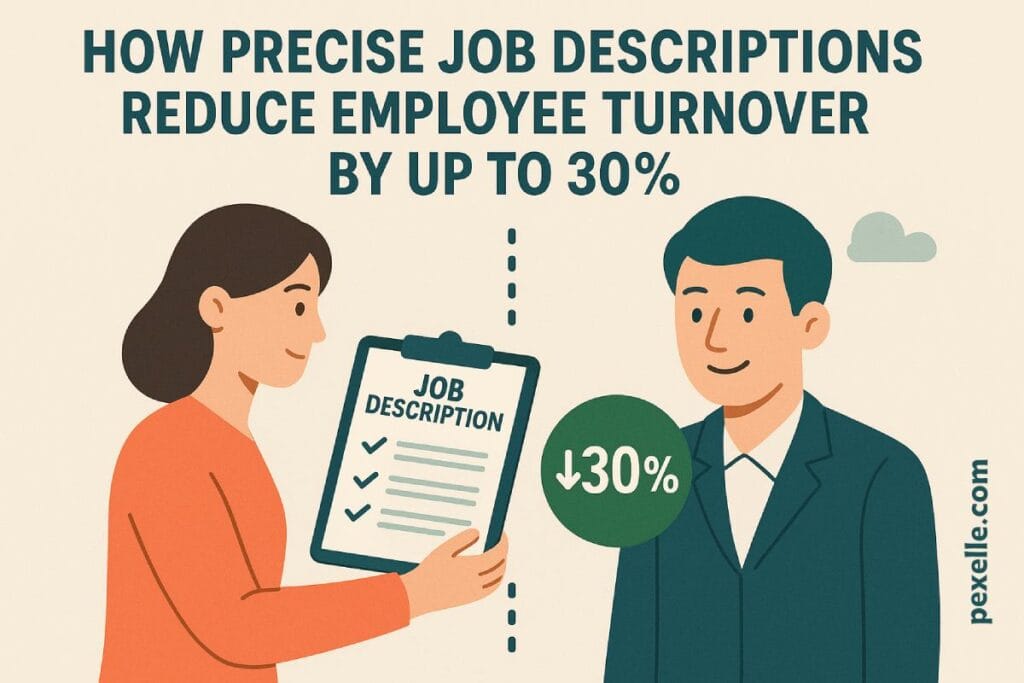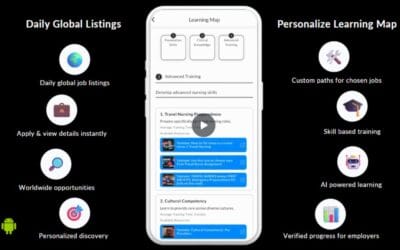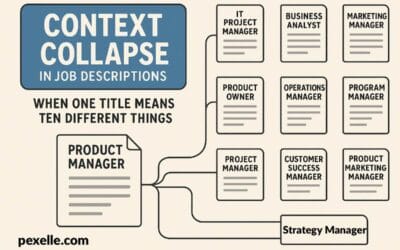How Precise Job Descriptions Reduce Employee Turnover by Up to 30%

A Data-Driven Analysis of How Role Clarity Boosts Hiring Efficiency and Retention
Employee turnover is one of the most costly challenges for modern organizations. According to multiple HR analytics studies, replacing a mid-level employee can cost up to 33% of their annual salary. One often-overlooked yet impactful solution lies in something deceptively simple: the job description. Recent evidence shows that organizations that invest in clear, data-driven, and role-specific job descriptions experience up to 30% lower employee turnover. But why does this happen?
📌 The Hidden Costs of Vague Job Descriptions
Vague or overly broad job descriptions introduce ambiguity into the recruitment process. When employees accept a role based on unclear or misleading expectations, two problems emerge:
- Poor Job Fit – Employees often discover that the job they accepted is not what they expected.
- Early Disengagement – Lack of clarity leads to frustration, confusion, and eventual burnout.
According to a 2023 LinkedIn Talent Insights report, 61% of professionals said they left a job within the first year because “the actual role differed significantly from the job description.”
🔍 The Role of Clarity in Attracting the Right Talent
A precise job description goes beyond listing generic tasks. It defines:
- ✅ Key responsibilities
- ✅ Required and preferred skills
- ✅ Specific tools and technologies used
- ✅ Expected outcomes and performance metrics
- ✅ Cultural and behavioral expectations
This transparency allows applicants to self-select, reducing mismatches. It also empowers recruiters to align candidates’ capabilities with role requirements more effectively.
📊 Data point: Companies with highly detailed job descriptions saw 25% faster hiring cycles and 17% better candidate-to-hire ratios, according to a 2022 Glassdoor survey.
🧠 Skills Clarity as a Driver of Retention
Employees stay longer when they know:
- What’s expected of them
- What success looks like
- How their skills are aligned with the company’s mission
When job descriptions are integrated with competency frameworks (like ESCO or O*NET), employees feel their strengths are being used purposefully. This alignment leads to:
- Increased engagement
- Faster onboarding
- Better performance reviews
- More opportunities for career growth
📉 Case Study: A fintech company reduced first-year turnover from 38% to 24% by revising job descriptions using a skills-mapping approach.
📈 Data Analytics: Quantifying the Impact
HR teams are increasingly using analytics platforms to quantify the return on investment (ROI) of better job descriptions. Here’s how:
| Metric | Before Precision | After Precision | Improvement |
|---|---|---|---|
| First-year Turnover Rate | 35% | 24% | ▼ 11% |
| New Hire Satisfaction (survey) | 72% | 89% | ▲ 17% |
| Time to Productivity | 5.2 months | 3.8 months | ▼ 1.4 months |
| Cost-per-Hire | $4,200 | $3,000 | ▼ 29% |
These figures show a compelling business case for redesigning job descriptions using structured, role-based templates.
🛠️ Practical Steps for HR and Talent Teams
- Conduct a Job Audit – Interview current employees and managers to define real responsibilities.
- Use Skill Frameworks – Map each task to core skills using ESCO or O*NET taxonomies.
- Involve AI Tools – Use language models to refine clarity, inclusiveness, and skill alignment.
- Standardize Templates – Maintain consistency across departments.
- Validate Through Feedback – Continuously improve descriptions based on hiring outcomes and employee feedback.
🚀 Conclusion: Job Descriptions Are Strategic Assets
In the age of talent competition, the job description is no longer a formality — it’s a strategic tool for talent acquisition and retention. Clear role definitions ensure the right person is hired for the right role, reducing misunderstandings, boosting morale, and ultimately minimizing turnover.
Organizations that treat job descriptions as living documents, regularly updated to reflect evolving expectations and skills, will not only hire better — they’ll build stronger, more committed teams in the long run.
Source : Medium.com




